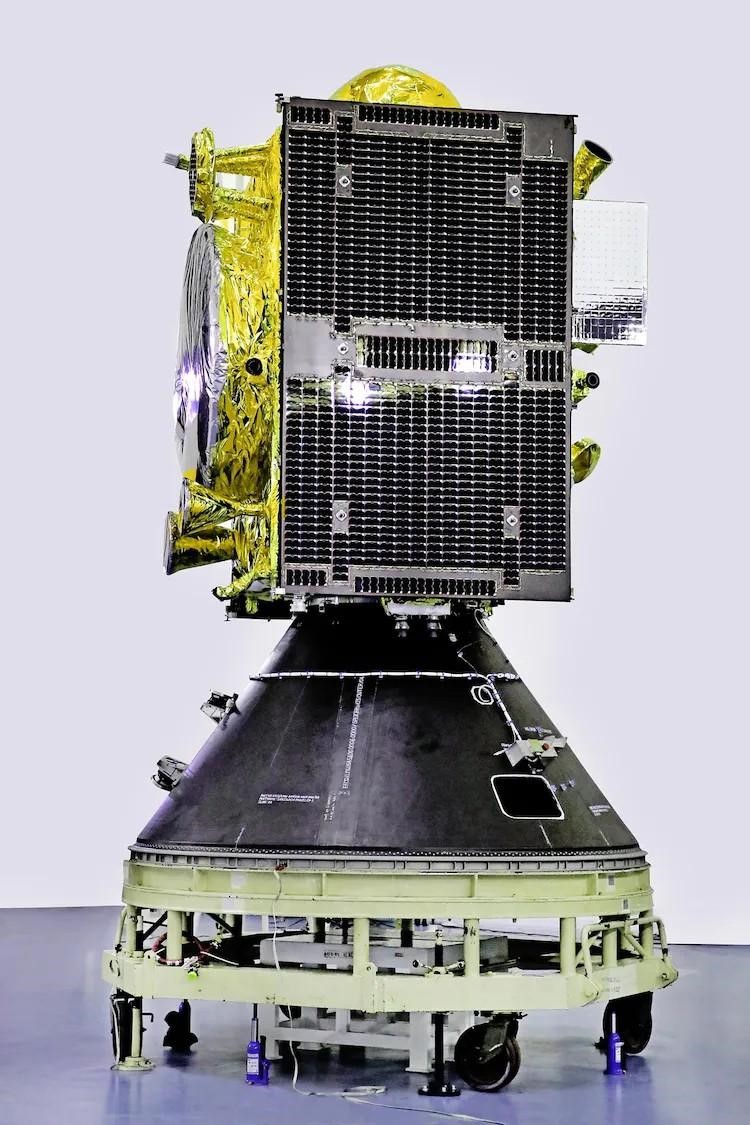NVS-02 Satellite: Boosting India’s Navigation System Capability
Why in the news?
India’s space agency ISRO launched the NVS-02 satellite to enhance the NavIC navigation system. The satellite offers advanced technology, longer operational lifespan, and improved global compatibility, boosting navigation capabilities across multiple sectors.
Launch and Purpose:
- Satellite: NVS-02, launched by ISRO, is the second satellite in India’s second-generation NavIC system.
- Launch Vehicle: The satellite was launched aboard the Geosynchronous Satellite Launch Vehicle (GSLV-F15).
- Objective: NVS-02 aims to enhance India’s regional navigation capabilities through the NavIC (Navigation with Indian Constellation) system.
Key Features of NVS-02:
- Weight: 2,250 kg, equipped with advanced navigation technologies.
- Rubidium Atomic Frequency Standard (RAFS): Provides precise timekeeping for navigation data.
- Payloads: Includes navigation payloads operating on L1, L5, and S frequency bands, along with a C-band ranging payload for accurate positioning.
- Geosynchronous Positioning: Positioned at 75°E in geosynchronous transfer orbit, ensuring accurate data transmission.
- Lifespan: The satellite has a 12-year operational lifespan.
Impact and Applications
- Replacing Aging Satellite: NVS-02 replaces IRNSS-1E, improving the NavIC system’s performance and longevity.
- Global Compatibility: With the inclusion of L1 band signals, it improves compatibility with global navigation systems, promoting wider adoption.
- Applications: The satellite will benefit multiple sectors, including navigation, precision agriculture, fleet management, emergency services, and mobile device tracking.
- Significance: NVS-02 strengthens India’s self-reliance in space technology, advancing the country’s capabilities in global navigation.
GSLV-F15 NVS-02 Mission Key Points:
- Launch Date: January 29, marking the 100th launch from Satish Dhawan Space Centre.
- Mission Type: GSLV-F15 NVS-02, part of India’s NavIC system.
- GSLV-F15 Details: 17th flight of GSLV, 8th operational flight with Indigenous Cryogenic stage.
- Payload: 3.4-meter diameter fairing, placing NVS-02 satellite into Geosynchronous Transfer Orbit (GTO).
- NVS-02 Satellite: 2nd in the NVS series, part of NavIC for precise Position, Velocity, and Timing (PVT) services.
- Navigation Payloads: Operates in L1, L5, and S bands with Tri-band antenna and Rubidium Atomic Frequency Standard (RAFS).
- Ranging Payload: C-band transponder for precise orbit determination.
- Lift-off Mass: 2,250 kg; Power Handling: ~3 kW.
Sources Referred:
PIB, The Hindu, Indian Express, Hindustan Times





